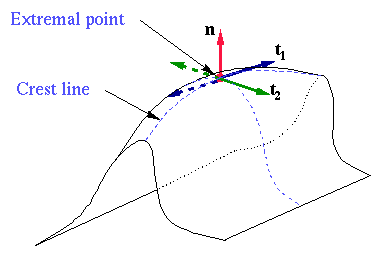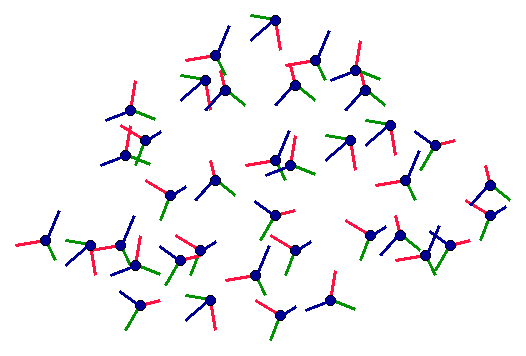
To obtain precisely located features, Thirion introduced extremal points, which are points of locally maximal curvature in both principal directions of the surface. These points are specific points on the crest lines and can be seen as the generalization of corner points for smooth surfaces in 3D.

To the position of the point, we can add the normal vector n and the two principal directions t1 and t2 of the surface to constitute a local coordinate system or a frame. In fact, this is only a semi-oriented frame since we can choose indifferently (t1, t2) or (-t1, -t2) to represent the principal directions.
|
|
|
Example of registered crest lines between two CT skull images of the same patient. Extremal points are represented by a color change from yellow to blue on the lines. Front view on the left and closeup on the occipital foramen on the right. In this last image, the width of a line is a tenth of a voxel, which shows the very precise registration of these extremal points.
Courtesy of J.P. Thirion
From now, for our statistical algorithms, a 3D image is modeled as a set of semi-oriented frames:
